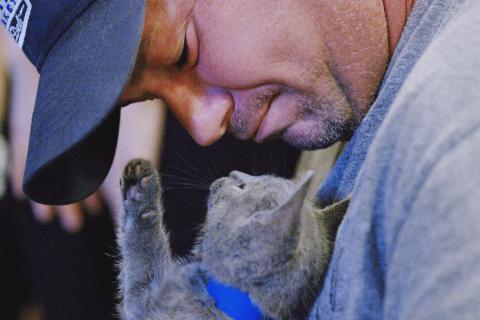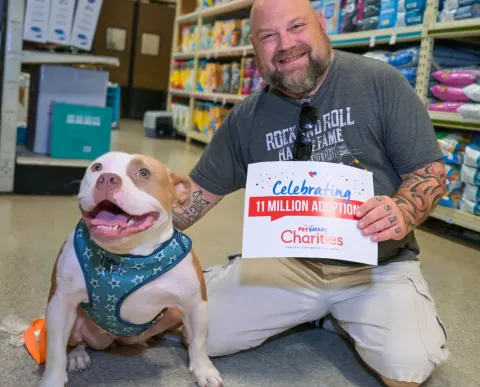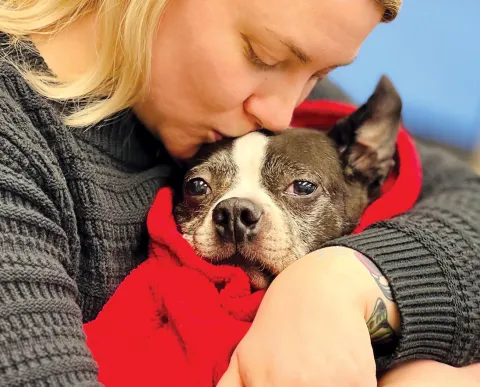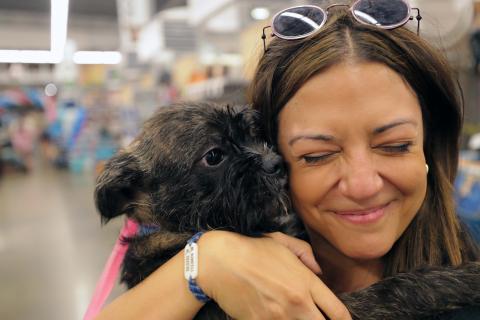You heard about it everywhere – during the pandemic, ZOOM wasn’t the only must-have for working remotely. Suddenly, pets, too, had gained even more favor in the minds of Americans as scores of people set up home offices. But was it truth or hype? The data has a story to tell.
It’s important to read stories from credible sources. News stories can at times present inaccurate information, and reports during the COVID-19 pandemic about a boom in dog adoptions — followed by a sudden increase in relinquishments once pet owners returned to the office — were no exception. The headlines shouted: Dog adoptions and sales soar during the pandemic, The pandemic pet boom, and Everyone wanted a puppy when the pandemic began, but now those dogs are being returned. It isn’t surprising that the public believed dog ownership had drastically increased in the United States during 2020, and that these dog owners had subsequently surrendered their pets following our period of isolation.
But it’s not the whole story.
While animal shelters are still dealing with changes precipitated by the pandemic, these changes have little to do with increased pet ownership or the notion that so many pets were returned like shirts that just didn’t fit. One set of data points that contradict the claim that dogs experienced a boom in adoptions during the pandemic include the estimates of total dog population based on national surveys. Packaged Facts (a division of MarketResearch.com) uses survey data collected by MRI-Simmons, and they show the total owned dog population declining from 85.2 million in 2019 to 83.4 million in 2020. Also, the American Pet Products Association (APPA) conducts a biannual national survey that shows dog ownership rates holding steady around 50% between 2018 and 2020[1]. How can this be if there was a boom in dog acquisitions during the pandemic?
The answer lies in the net effect of acquisition and attrition. Households with incomes over $100,000 gained three times as many pet owners (3.9 million) during the COVID-19 pandemic than in the period between 2017 and 2019. This surge in the pet ownership in the highest income bracket accounts for the commensurate increase in spending experienced by the retail pet supply industry. Unfortunately, the effects of the pandemic were not felt by everyone equally. Lower-income brackets of households earning less than $35,000 saw a loss of pet owners of 3.4 million between 2019 and 2021 compared to a gain of 264,000 between 2017 and 2019 [2]. The difference between renters and homeowners is even more stark. Pet parents who owned their own homes increased by 3.7 million, while pet-owning renters declined by 4.3 million between 2019 and 2021—resulting in a net loss of 600,000 pet-owning households.
The idea that dogs were returned to shelters in vast numbers once people returned to work in the office also does not bear out in the data. The number of returns to shelters as a percent of intakes declined in 2021 at 5.7% compared to 5.8% in 2019[3]. But one metric that did increase after the COVID-19 pandemic is the population of dogs in animal shelters (20% increase between Jan 2020 and June 2022). The increase in dog population at shelters is a result of more dogs coming into the shelters than are going out. This imbalance in intakes and outcomes (92.8% in 2021 and 90.6% in 2022) means that shelters are filling up and will continue to do so until adoptions outpace intakes[4]. Even though fewer dogs are entering shelters in 2022 than in 2019, this imbalance between intakes and outcomes results in an increase in canine populations at the shelter.
Long story short – there are more dogs (and cats, though the difference is less pronounced) in shelters now than pre-pandemic. Why? It’s NOT because more pets are entering shelters, it is because not enough are leaving quickly. Shelters across the country are struggling this summer and the best thing we can all do to help is focus on generating positive OUTCOMES – adoption, foster and returning lost pets to their homes (ideally without ever entering the shelter).
Do you operate an animal shelter in need of support? Please check out our partner page and learn more about becoming an in-store adoptions partner.
[1] APPA National Pet Owners Survey, 2017-2018 & 2021-2022
[2] “Fountain Report: Market Intelligence for Leaders in Animal Health,” April 1, 2022.
[3] 24PetCare: https://lms.petpoint.com/reporting/
[4] “Shelter Animals Count - Q2 2022 Analysis,” July 2022, https://www.shelteranimalscount.org/wp-content/uploads/2022/07/SAC_Q22022Report_R072822.pdf?utm_campaign=2022+Q2+Report









